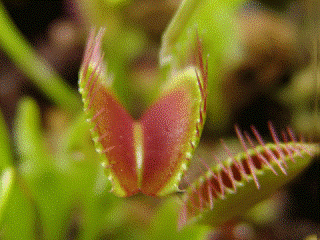Aug 25 2015
Researchers at the University of Massachusetts Amherst have formulated a new method based on the natural “snapping” systems, such as Venus flytrap leaves and hummingbird beaks, to apply curved creases so that thin curved shells are provided with a quick, programmable snapping motion mimicking the natural “snapping” systems.

The new method does not need the use of intricate materials and fabrication techniques to develop structures with quick dynamics. The research team is headed by physicist Christian Santangel. According to him, this research will soon assist materials scientists and engineers who are keen on constructing structures with the ability to quickly change shape and properties.
Santangelo and team along with polymer scientist Ryan Hayward highlight the fact that so far, there is not a single general geometric design rule for developing a snap between stable states of randomly curved surfaces.
“A lot of plants and animals take advantage of elasticity to move rapidly, yet we haven’t really known how to use this in artificial devices,” says Santangelo. “This gives us a way of using geometry to design ultrafast, mechanical switches that can be used, for example, in robots.”
The research findings relating to the new geometry have appeared in an early online issue of Proceedings of the National Academy of Sciences.
The authors point out, “While the well-known rules and mechanisms behind folding a flat surface have been used to create deployable structures and shape transformable materials, folding of curved shells is still not fundamentally understood.” Further, they explain that although the concurrent coupling of stretching and bending that distorts a shell naturally provides objects “great stability for engineering applications”, it is not an easy task.
The research paper presented by the UMass Amherst team describes the geometry of folding creased shells as well as illustrates the circumstances under which it may fold in a smooth manner. They say the new method “will find application in designing structures over a wide range of length scales, including self-folding materials, tunable optics and switchable frictional surfaces for microfluidics, such as lab-on-a-chip technology and inkjet printer heads.”
The researchers explain, “Shape programmable structures have recently used origami to reconfigure using a smooth folding motion, but are hampered by slow speeds and complicated material assembly.” They also informed that the rapid snapping motion created by them “represents a major step in generating programmable materials with rapid actuation capabilities.”
Santangelo and team further said that, “Their geometric design work lays the foundation for developing non-Euclidean origami, in which multiple folds and vertices combine to create new structures,” and “the principles and techniques open the door for developing design paradigms independent of length-scale and material system.”
Other members of the team at UMass Amherst include Nakul Bende, Arthur Evans, Sarah Innes-Gold and Luis Marin, with physicist Itai Cohen from Cornell University. The National Science Foundation provides funding to this research work.